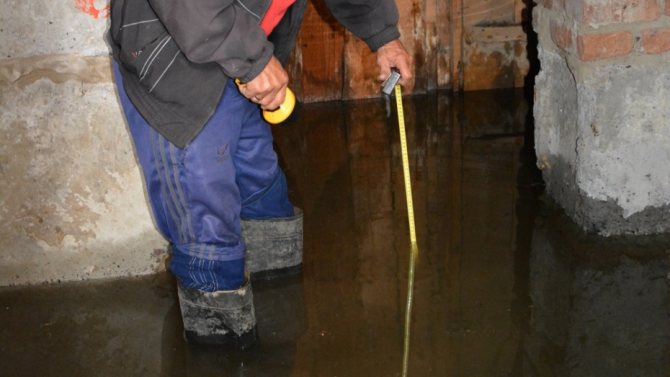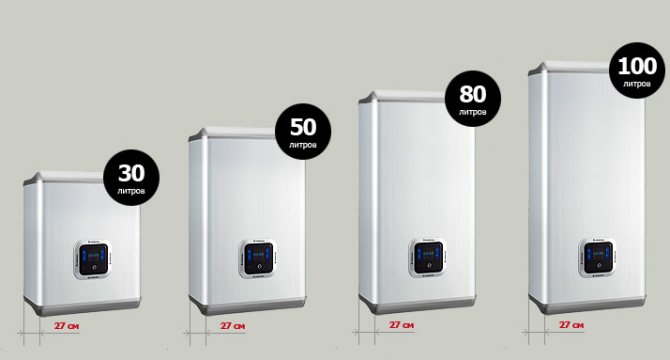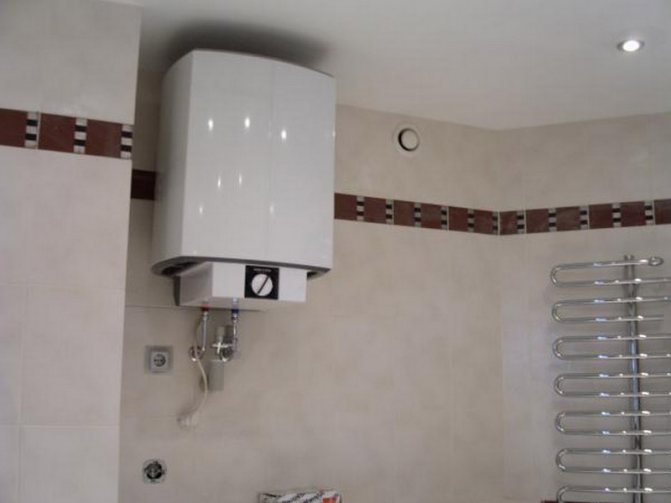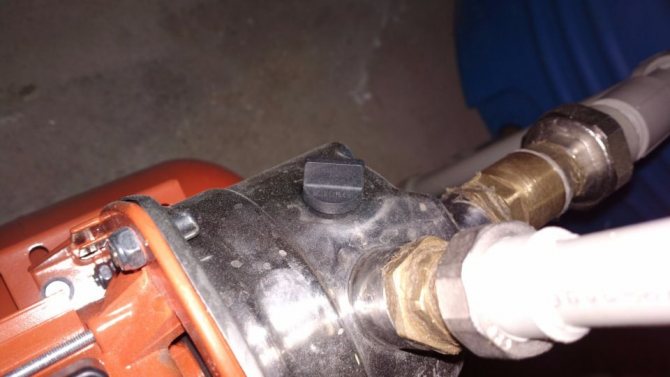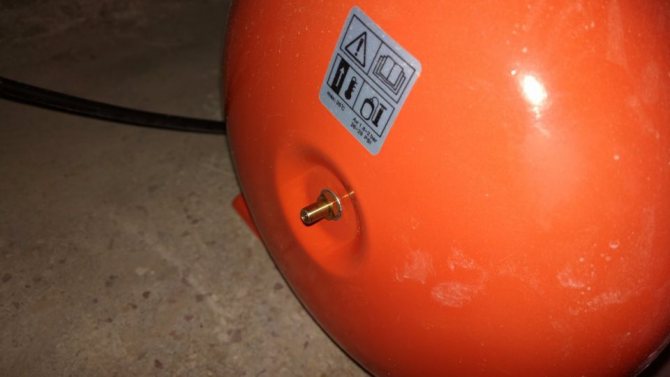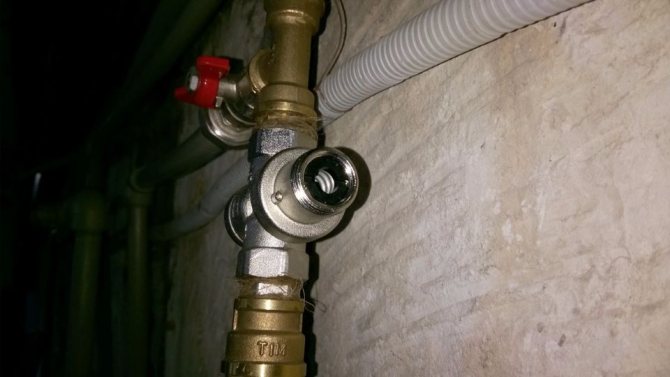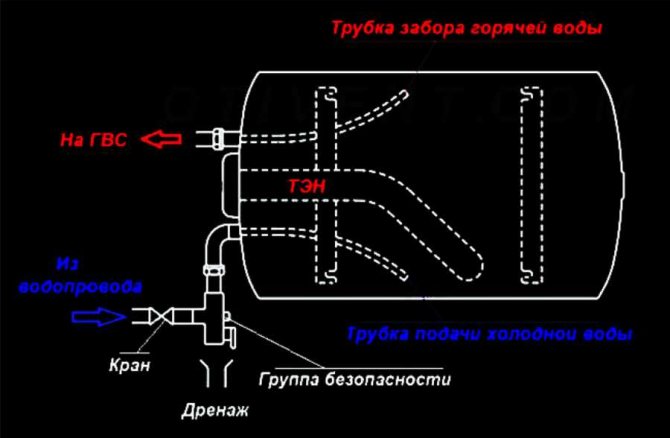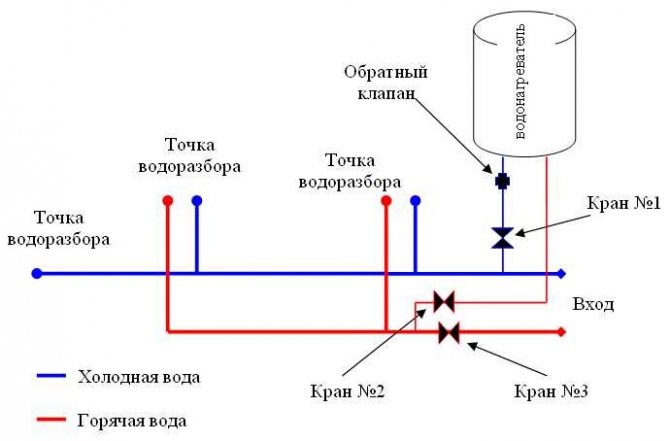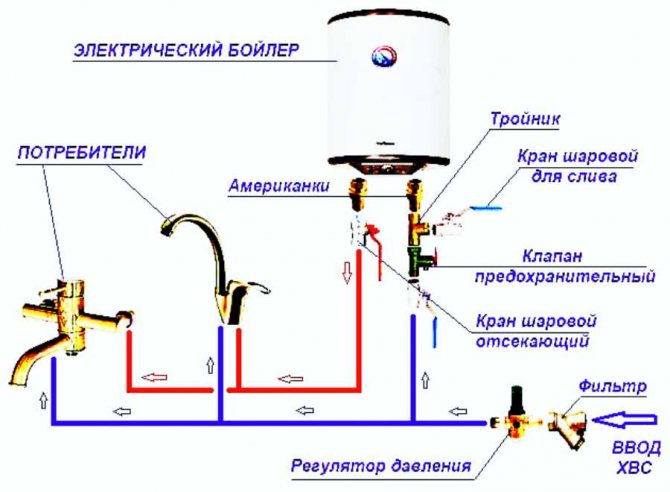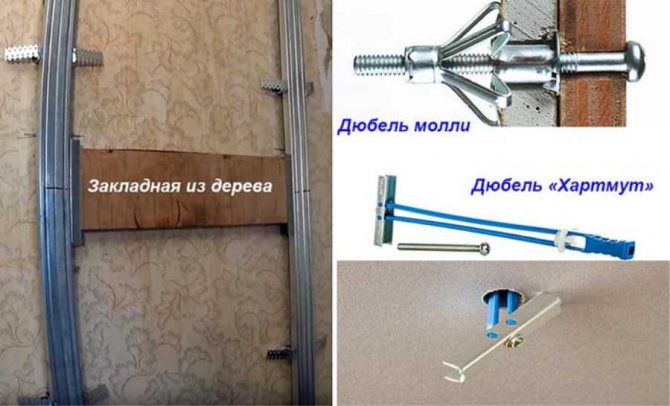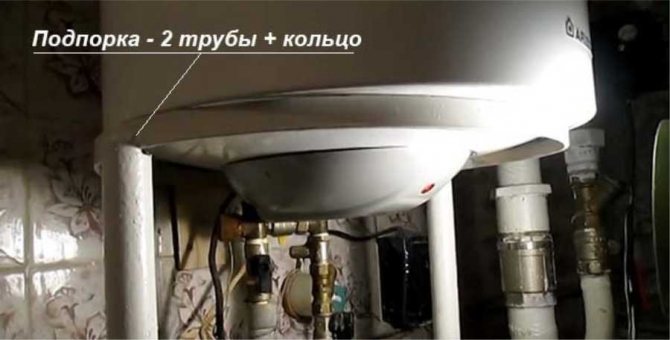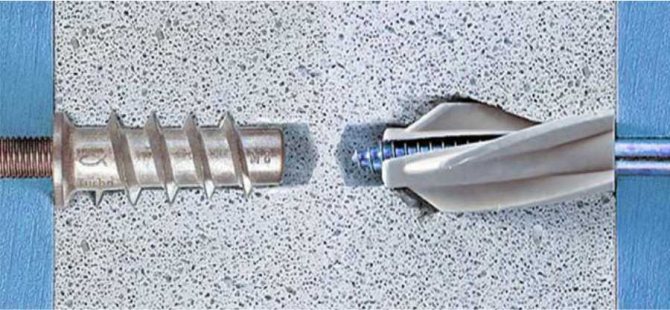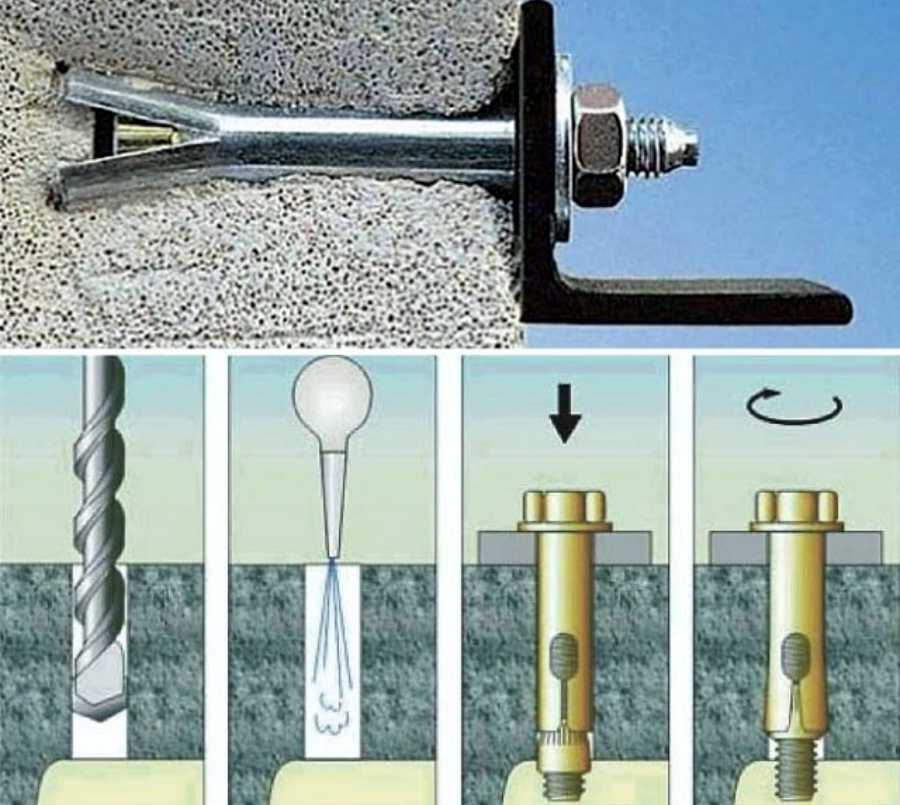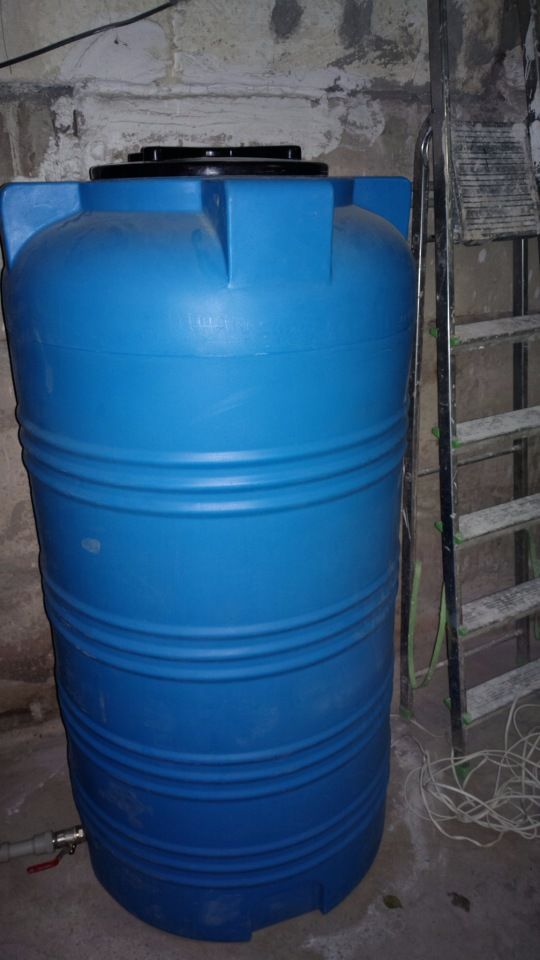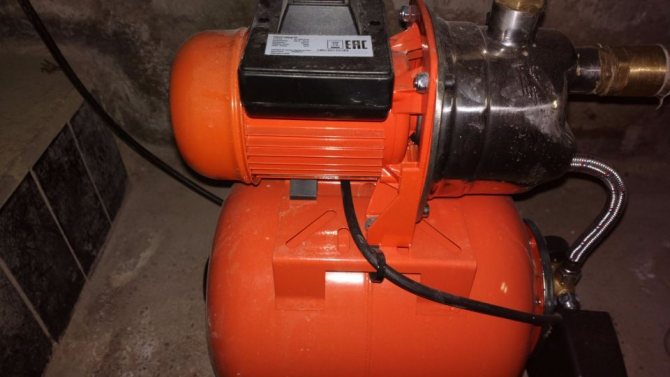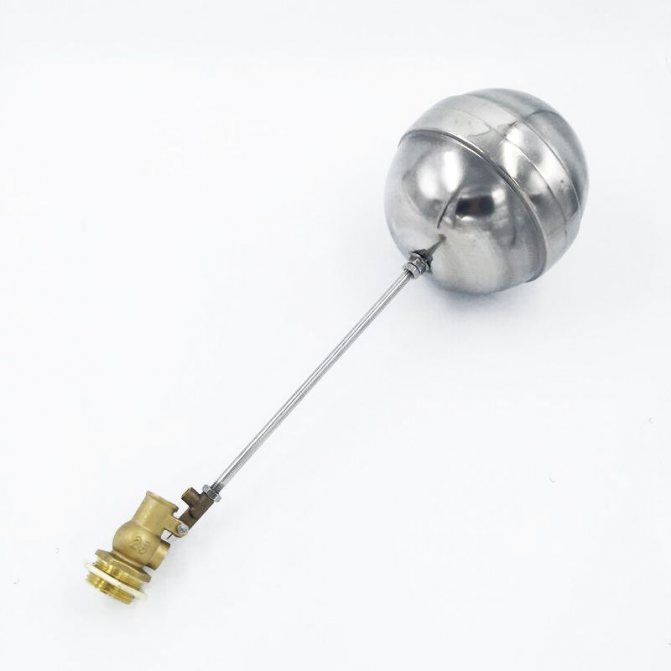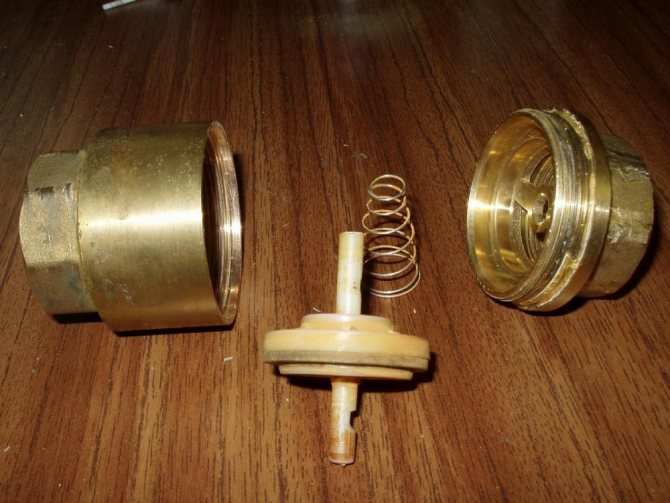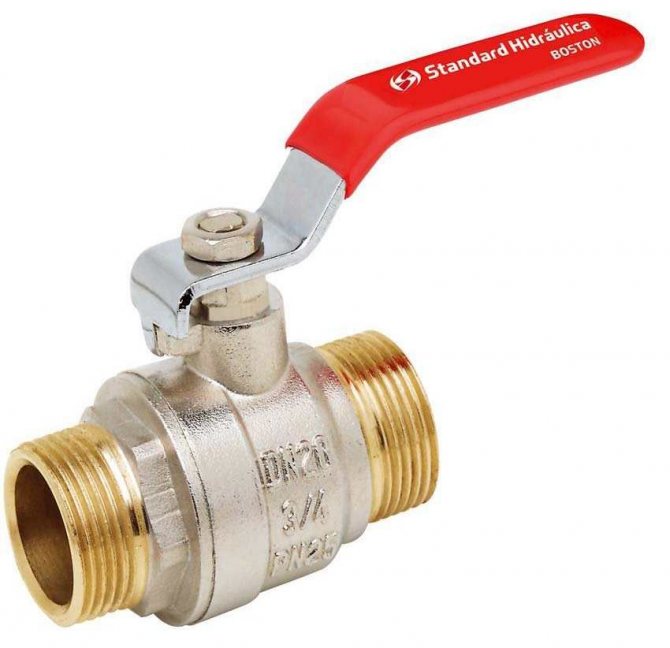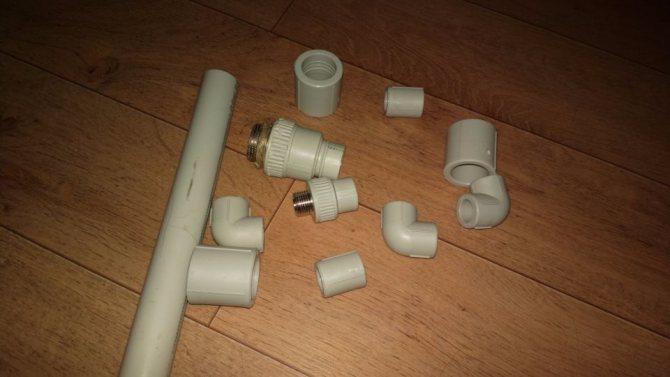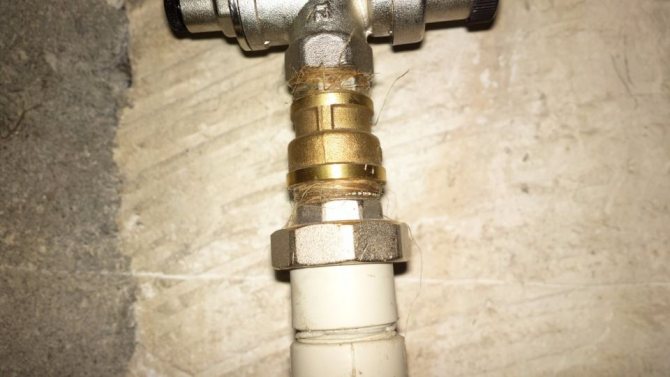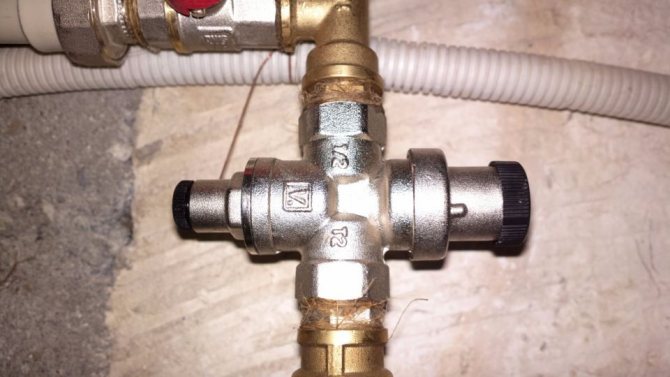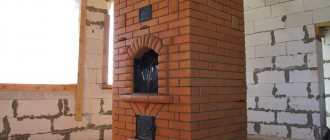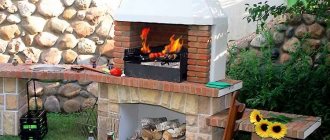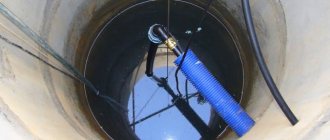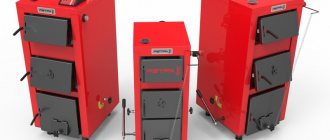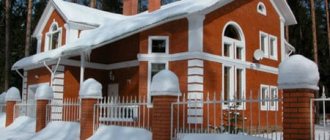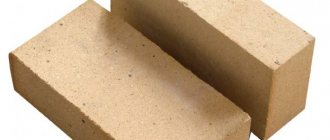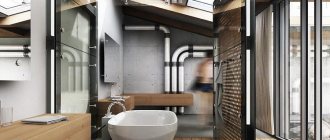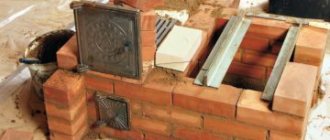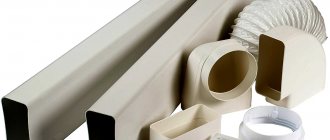What criteria should be used to choose
There are 3 main criteria for this process:
- Volume. You should not set the maximum device for this value. This may lead to financial difficulties in the future. Since more water will go to a container of sufficient volume, then the bill for its consumption will be higher. It is worth remembering that the larger the volume of the installation, the more it will come into contact with the coil, which can lead to heating of the coolant.
- Power. This criterion affects the heating of the water. For a full-fledged heating process, a water heater with an indicator of 8-12 kW is suitable.
- Diameter. This criterion depends on the area of the room where the device is installed.
Flow type electrical devices
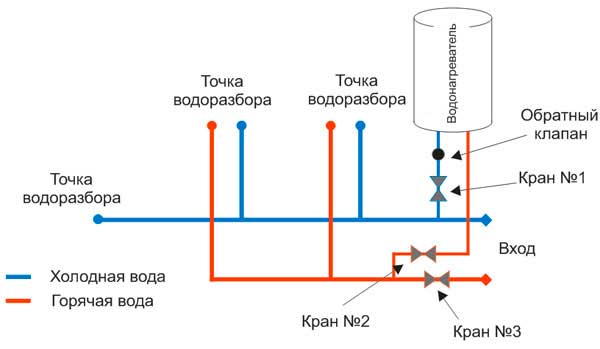
Water heater connection diagram.
They differ in that they instantly heat water and take up very little space. After waiting a few seconds from the moment the system is turned on, you can use warm water as if there was no shutdown.
However, this design has one significant drawback - it is extremely uneconomical in terms of electricity consumption. So the moments of using warm water will be worth their weight in gold.
Installation and operation of a heating boiler
Boiler in the heating system
After performing all the necessary calculations of the boiler power and its volume, you can start integrating the device into the heating system.
Determining the installation site is an important task. Having decided on the purpose of the boiler in the heating system, you need to read the instructions for its installation
The best option would be to install it in the immediate vicinity of the boiler. In this case, the transfer of heat energy from the coolant to the water is most efficient.
But at the same time, you can face the following difficulties in organizing heating using a boiler:
- Domestic hot water supply. In a heating system with a solid fuel boiler, it is most convenient to place the boiler directly in the boiler room. But then, to supply heated water to the premises, you will need a separate pump and control devices for it;
- Large capacity. if heating via a boiler is planned for large residential areas. There is a problem with the placement of the heating element;
- Power supply to ensure the operation of the heating element. For the normal functioning of a boiler for heating a private house, it is also recommended to install an autonomous source of electricity.
Having solved these issues, you can proceed directly to the installation.
The temperature of the heating water through the boiler is monitored using an installed thermometer. It is not included in the standard package and therefore needs to be purchased separately.
Installation of a heating storage tank
To install the heat accumulator, it is necessary to prepare a flat area in advance. Its heavy weight should be taken into account - if necessary, a separate foundation is made or the floors are reinforced.
The best mounting option is on a separate platform. In this way, contact of the housing with the concrete surface can be avoided, which will reduce heat losses in the electric boiler for heating. Almost all manufacturers make containers on special legs. If they are absent, it is recommended to install insulation on the floor.
The procedure for connecting the boiler to the heating system is to perform the following actions:
After installing the container, you need to check its position relative to the horizon. Deviations are not allowed. Connect to heating
It is important that the diameter of the nozzles is equal.Otherwise, after connecting the boiler to the heating system, excessive hydraulic resistance will appear. If the installation is carried out in an unheated room, the boiler body is insulated. A connection to the hot water supply is made so that the boiler works not only for heating, but also for hot water supply.
Upon completion of this work, it is necessary to check the tightness of all connections and start the heating system. Within 2-3 weeks, it is recommended to measure the temperature of the water in the tank and the coolant in the pipes after the boiler is turned off. In this way, you can determine the actual time to maintain the required heating level in the heating circuit from the boiler.
In order to make full heating from the boiler, it is not recommended to use antifreeze. It is characterized by a relatively low heat capacity, which will affect the transfer of heat to water and back to the coolant.
Conditions for the correct operation of the boiler
Limescale on the heating element of the boiler
Maintenance of the storage tank is practically no different from carrying out the necessary procedures to maintain the operability of any electric boiler with heating elements. And in this case, in order for the boiler to work normally in the heating system of a private house, it is required to follow the manufacturer's recommendations.
This can be ensured even before the heat supply from the boiler is made. It is best to purchase models with the so-called "dry heating element". On it, the formation of scale is much slower. You should also pre-filter the water before feeding it into the storage tank.
In addition to these procedures, the following must be done:
- Check the integrity of the structure's thermal insulation once a month;
- Control the duration of maintaining the temperature of the coolant during the operation of the heat supply through the boiler. The difference between the calculated and actual indicators should not exceed 15%;
- Checking the tightness of connections. It is recommended to replace the gaskets before each heating season. This way you can achieve more reliable heating of a private house using a boiler.
The control unit of some models is sensitive to voltage surges. To avoid damage to this expensive device, you should connect a stabilizer for the boiler in the heating system.
To clean the heating element from scale, you should dismantle it. But before that, you need to ask the seller whether the factory warranty will be preserved.
Boiler room in an apartment building
This time you will have to stomp from foot to foot and chatter teeth.
Especially true with small children - there is no laughing matter. Roughly the same when someone turns on the second tap, for example, in the kitchen, the wife washes the dishes. Solution option... Immediately after the boiler on the hot water line, you put a tiny boiler of 35 - 50 liters, and that's it! Problem solved! And this boiler does not even consume much electricity, since the boiler is already supplying hot water to it. The money is small, but the effect is obvious!
Boiler - a container for hot water, which is connected, for example, to a solid fuel boiler, and serves to heat water that will be used for hot water supply to the house. If the boiler has the ability to connect an indirect heating boiler, then such a boiler (after connecting the boiler) becomes a double-circuit one. The first circuit is a heating system (batteries, warm floors), and the second circuit is a hot water supply circuit. Thus, the boiler is needed for the implementation of hot water supply in the house, the water in which will be heated from the heating boiler.
If hot water supply will be carried out only from an electric heater or from some independent heat sources, the second circuit of the boilers remains unused and is muffled with plugs. If there is a question of choosing an indirect heating boiler, you can advise to pay attention to the combined indirect heating boiler (heat exchanger).This type of heat exchanger has an additional heating element - Electroten. This heating element is used both separately - during the period when the boiler is not working - for example, in summer, and in combination with a working heating boiler to additionally increase the water temperature in the hot water supply system if the water in the tap is not hot enough (for example, in the inter-season - when the boiler does not work at full capacity). Thus, combined water heaters are installed and operate both from a heating boiler, from an electric heating element and from a heating element and a boiler together. And the modern technology "Sukhoi TEN" (no contact with water, because TEN in a ceramic shell) allows you to operate such a boiler (water heater) for a very long time, because the metal heating element of such heaters does not touch the water, and, accordingly, scale and rust do not form.
See all articles "
| +7 (multichannel) |
| Advice |
| Elite series of German water heaters "STIEBEL ELTRON" provide soft and comfortable hot water supply. ... |
We offer the best models from this series
Preparatory work before installing the boiler
Self-installation of an electric water heater will cost you less than the services of specialists. On average, the work will take about two hours. But when preparing for installation and directly in the process of performing work, you should follow the safety rules.
- First of all, you should decide on the model of the boiler: what kind of system it should be - flow-through or storage, how many liters it is designed for, how it will be mounted - horizontally or vertically, on a wall or under a sink, etc.
- The next step is to create a wiring diagram for the device on paper with the designation of the hot and cold water inset. Then you need to do the following:
- make room for the water heater and work;
- check the strength of the wall for the ability to withstand the weight with a double margin (for example, if the boiler has a volume of 50 liters, then fasteners are required for a weight equal to 100 kg plus the weight of the empty boiler);
- since a water heater is a very powerful consumer of energy, it is necessary to determine in advance the type of wiring (aluminum or copper) and the cross-section of the cable laid in the walls, as well as assess the ability of the wiring to withstand the load of an electric boiler (for example, to connect a 2 kW boiler, a copper cable with a cross-section is required from 2.5 mm2);
- check the condition of water pipes and risers (especially for old houses) - they must be in good condition and have points for connecting a water heater.
- Before you start installing the boiler, you must read the instructions in order to understand the features of the model, then turn off the electricity and shut off the pipes supplying hot water. It should be remembered that if you live in a multi-storey building, this will temporarily deprive the residents of other apartments of hot water, so you need to carefully prepare for work in order to finish it as soon as possible.
You can check the strength of the wall in the following way: mount the fasteners supplied with the boiler and hang two bags of cement on it. If the mount can cope with such a load, then it will be able to withstand a water heater, which weighs half as much.
Particular attention should be paid to checking the strength of the wall when installing a large 150-liter boiler. Fastening of such a unit is made on expansion metal anchor bolts or special strong hooks.
It is recommended to use anchors with a length of 100 mm and a diameter of 10 mm.
It should be borne in mind that the installation of the water heater will require the efforts of two people, since this process is quite time consuming. Typically, the boiler is mounted in the bathroom or toilet directly above the toilet. As a rule, this place is not used in any way. At the same time, it must be approached freely.
In a small room, to save usable space, the boiler is usually placed horizontally. A small water heater is attached to the wall, and units with a volume of 200 liters or more are installed on the floor.
What is a boiler room
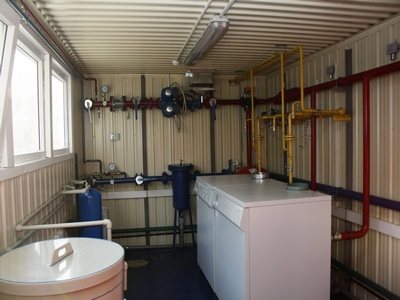

Boiler installation - what is it and for what needs is it used? Logic dictates that the boiler room is the room where the boiler is located. It is a container for heating a liquid.
Simply put, a boiler is a steel tank in which the liquid for the domestic hot water system is heated in any way.
The point is not to deliver hot water from the CHP to the residential area, but to raise its temperature right on the spot, thereby eliminating the inevitable heat loss during transportation.
Some houses do not have hot water supply at all, and the boiler system is the only source of hot water for them. In addition to the heaters themselves, other equipment is also needed - feed pumps, shut-off valves, control unit, measuring instruments, etc.
Attention! The term "boiler" has become a household name. Those devices that are located in the basements of houses, it would be more correct to combine under the name "boiler room", the real boilers are located at the CHP. For simplicity, we will use common names.
Boiler prices
Features of the
Unlike conventional water heating devices, this device has an inlet pipe (for cold water) mounted at the bottom of the storage tank, and at the outlet (for hot water) - from above.
Thus, the liquid must circulate in a closed heating circuit at a fixed temperature, which is achieved in the upper part of the tank.
Indirect heating boiler with connection to the boiler
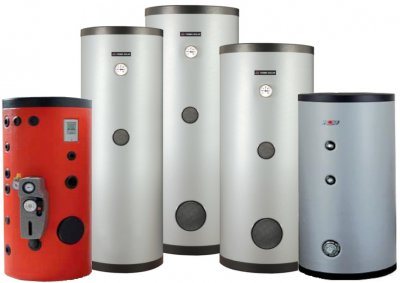

The main difference between such a device and a conventional water heater for heating is the presence of an external source of heating the coolant. It can be solar panels, a boiler, central heating.
From such an auxiliary source, a coolant passes through a coil passing through the inside of the boiler, which, in turn, heats the liquid in the tank.
This system is protected by an insulating layer.
Electric storage boiler device
Knowledge of the device and the principle of operation of the unit will allow you to avoid annoying mistakes during installation and operation, and this will increase the duration and safety of use.
What are the elements of an electric boiler?
- Bracket for fixing the boiler to the supporting surface. Placed in the upper part of the device, it ensures reliable fastening of the boiler. It is made of heavy plate steel, welded to the outer casing by resistance welding.
- Cold and hot water supply pipes. The cold water connection is short and has a jet diffuser. Due to this design, cold water is evenly distributed in the lower volume and the pressure of the jet does not mix with the heated one. The heated water rises due to the difference in density between cold and hot water. The branch pipe for hot water intake has an increased length, the intake takes place in the upper most heated part of the volume.
- Thermal insulation layer. A very important element of the boiler, heat saving indicators largely depend on it. It is made from various modifications of polystyrene.
- Thermostat. Adjusts temperature values, automatically turns on / off the power. It will be placed in the lower part, you need to remember this when adjusting the temperature of heating the water.
- Internal reservoir. It can be made of stainless steel (expensive models) or ordinary sheet steel with an anti-corrosion coating.
- Heating element. Power 1.5–2.0 kW, it can be “wet” or “dry”.
- Magnesium anode. Purpose - to reduce the corrosion processes of the internal tank. How does it work? Water contains oxygen, which oxidizes iron.Magnesium is highly active and is the first to react with oxygen, due to this, its concentration in water decreases, and steel rusts more slowly. The frequency of replacement of the magnesium anode depends on the frequency of using the boiler and is on average 5–8 years.
- Thermometer. An ordinary bimetallic thermometer is used, the reading accuracy is ± 2–3 ° С. Some modern models have electronic control units, but this does not affect the quality of operation. But the cost of the boiler increases significantly.
- Indicator light. It turns on when voltage is applied to the heating element and turns off simultaneously with it.
- External casing. Covered with durable powder paints that reliably protect the metal from the negative influence of external factors.
- Safety and non-return valves. Manufactured in one housing, they control the pressure in the boiler and protect against excessive pressure build-up during water heating. The check valve performs two functions: it prevents emergency exposure of heating elements and prevents heated water from getting back into the water supply system. In the absence of a valve, heated water enters not only for its intended purpose, but also into the entire water supply system.
- Plastic sleeve. It is used when connecting the boiler to metal pipes, lowers the voltage indicators during a short circuit of the heating element. But it cannot completely protect users, we will talk about this in the article below.
Most boilers are composed of such elements. Slight technical differences do not affect the installation process.
Why do we need boilers in basements
Management companies are installing boilers in the basements of houses with might and main, fulfilling the city's program. And in apartments, on staircases and in yards, residents are discussing what this reorganization of hot water supply will give them, if once again the changes come "from above", that is, from the executive committee, and not "from below" from the owners of the houses.
“The tenants of our house are categorically against the installation, because there are only examples of worsening of the situation with these boilers. Now we are collecting signatures from all residents against the installation of water heaters. The director of our management company does not hide that it will only get worse with the boiler, ”writes Nadezhda, the head of the house, in the housing and communal services blog on our website. “A boiler is a boiler in which cold water is heated using hot water, such as a large cauldron. As everyone opens the taps for DHW consumption, then the problems will begin, i.e. shortage and low water temperature. All this is nonsense, since we tried in one organization, there is little sense, there is almost no savings, you open the hot water tap - warm water will flow, and for the water to become hot, you have to wait. The water flows down, and the meter counts the volume of hot water supply, ”- in the same blog, a certain“ Veteran ”explains to Nadezhda. People are extremely interested in the cost of installing boilers, and in what amount in rubles the water from these boilers will pour out.
We contacted specialists from several management companies. It turned out that the price of one boiler, together with installation and preparation for work, ranges from 200 to 850 thousand rubles. The amount depends on the power of the boiler, and the power depends on how many residents will consume water.
- Therefore, it is a big mistake to think that at the moments of "peak" load someone will have to open the tap and wait for the cold water to turn warm. Even if all tenants turn on all the taps in the bathroom and in the kitchen. This is guaranteed by the technical parameters of the boiler, ”says Zamfir Khazivaliev, chief engineer of the Paritet Management Company.
DIY boiler for heating
It should be noted that the cost of factory models of a boiler for heating a summer cottage is quite high - from 7,000 rubles. and more. An alternative option is to manufacture the structure on your own.
For this, you can use any steel container.
It is important that its volume corresponds to the calculated one.To organize heat supply schemes from a homemade boiler, you will need the following components:
- Tank. It is best to order a stainless steel structure or make one yourself. The body must have holes for soldering the inlet and outlet pipes;
- Coil. The best option is to install a copper structure. This material has optimal parameters for the transfer of thermal energy;
- Fastening of branch pipes for connection to heating and hot water supply.
To ensure thermal insulation, it is recommended to make a double casing. Glass wool or basalt insulation is installed between the walls. The recommended thickness of the interlayer is 5 cm. The procedure for installation and commissioning is no different from the factory models.
How effective is the use of a boiler in the heating of a house? It all depends on the correctness of the calculations of the parameters of the entire system. Only after calculating the optimal characteristics and checking them in practice can we talk about the real efficiency of the boiler installation.
The video material shows an example of using a boiler in a heating system.
What should be a room for a boiler room
Of course, a separate building is considered the best option for a boiler room for private houses. In this case, the safety of residents is increased several times in the event of a boiler explosion. In addition, the noise from the operation of the equipment will not be heard in a separate room. One of the installation options in a private house can be a basement.
It is strictly forbidden to install the heating boiler in residential premises.
For the boiler room of private houses, it is very important to have not only a large area. It is also necessary for the ceiling height to exceed two meters. The dimensions of the boiler room depend on the equipment used, as well as its capacity. Each boiler room of private houses must necessarily have a circuit breaker that matches the parameters of the electrical wiring.
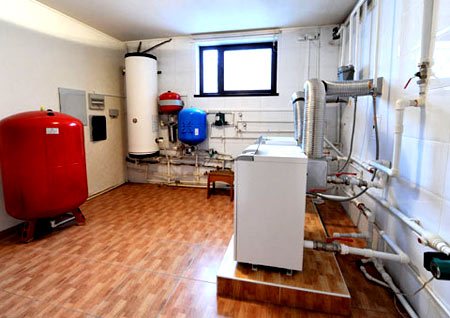

A variant of the layout and arrangement of a room for a boiler room
The laid cable must have a cross-section corresponding to the mains voltage. When choosing a cable, the power of the mounted devices must be taken into account. In the case of installing several heating boilers, shut-off valves are connected to each.
Water is supplied to the boiler, as a result, it works together with the heating system as a single unit. A sewerage system is supplied to drain the water. The installed equipment is being debugged, and the pressure of the gas, as well as the supplied water, must meet the standards of the state standard.
Using a boiler for a water supply system to heat a house
One of the frequently asked questions regarding the use of a boiler in a heating system is the following: is it possible to use a boiler, which is designed to simply heat domestic water, in the heating system. There is no definite answer to this question - it all depends on how branched the heating system itself is and what additional equipment is used in this case.
A boiler for a water supply system differs in that it has both holes (both the cold water inlet and the hot outlet) located at the bottom, and both of these holes are small in diameter (most often they are 0.5 inches or about 1.2 cm ).
This arrangement of holes excludes the possibility of water movement through the heating system on its own, since here cold water will not constantly "expel" hot water from the tank and force it to move through the pipes. But, in general, such a boiler can also be used in the heating system, if we supplement it with a circulation pump, which will be "responsible" for the movement of water through the heating system. The effectiveness of such a system depends on several factors:
- on how powerful the boiler itself is.The suitable power is usually determined at the rate of 1 kW per 10 square meters of heated area.
- on what power the circulation pump has
- on how branched the heating system of the house is. It is best if it does not have many branches.
As for the type of boiler, here you can use both an instantaneous and a storage water heater.
So, heating a house with a boiler is not at all a fantasy, but a completely viable option for a heating system. The main thing when creating such a system is to accurately calculate the required boiler power, based on the size of the house. In some cases (for example, if the area of the house is large enough), the efficiency of the system can be increased by expanding the inlet and outlet for water, as well as by upgrading the boiler itself, allowing it to increase its capacity.
07.07.2013 at 20:07
What is the pressure in the system?
9 floors
Houses with a height of up to 9 floors have a bottom filling from the bottom up. Those. from the water meter through a large pipe, water goes through risers to the 9th floor. If the water utility is in a good mood, then at the inlet of the lower zone there should be about 4 kg / cm2. Taking into account a pressure drop of one kilogram for every 10 meters of water column, residents of the 9th floor will receive approximately 1 kg of pressure, which is considered normal. In practice, in old houses, the input pressure is only 3.6 kg. And residents of the 9th floor are content with even less pressure than 1kg / cm2
12-20 floors
If the house is higher than 9 floors, for example 16 floors, then such a system is divided into 2 zones. Top and bottom. Where for the lower zone the same conditions remain, and for the upper zone, the pressure is raised to about 6 kg. In order to raise the water to the very top into the supply line, and with it the water flows up to the 10th floor with risers. In houses above 20 floors, the water supply can be divided into 3 zones. With this flow scheme, the water does not circulate in the system, it stands on a backwater. In a high-rise apartment, on average, we get a pressure of 1 to 4 kg. There are other meanings, but we will not consider them now.
Features of mounting a boiler on a thin wall
Ideally, the water heater should be mounted on solid brick, concrete or block walls, since the appliance is quite heavy with water. But sometimes the device needs to be hung on a thin plasterboard, frame, wooden, aerated concrete or foam block base. In this case, you will need to strengthen the wall and use special fasteners.
It is impossible to mount a water heater directly on a wooden wall for reasons of fire safety. To begin with, it must be well insulated from heating, for example, with a profile iron, which is used for the roof.
In other cases, special mounts are used:
- spiral nylon plugs;
- metal fasteners for mounting boilers with a capacity of 100 liters or more.
If you plan to hang the water heater on a wall made of foam concrete blocks, then you will need metal dowels or special chemical (adhesive) anchors for foam concrete. Chemical anchor is a versatile fastener that can withstand high loads. It is environmentally friendly and resistant to low temperatures.
Fastening to a glue anchor is done in the following way:
- A hole is drilled with the expansion of the channel by rotating the drill at an angle in different directions.
- Concrete dust is removed from the hole.
- The hole is filled with a quick-hardening mixture into which a mounting sleeve or threaded stud is inserted.
The resulting cone-shaped plug provides a fairly high fastening strength.
Is it possible to use a boiler for hot water in the heating system
In order to fully understand what kind of device it is, you need to understand all the nuances.
What is the device
Visually, a boiler for heating looks like a container of a rather large volume. A heat source is located inside or under it.
Design and specifications
A pressure sensor and an electronic-mechanical boiler control system are located on the outer casing of the device. Next, there is a layer of thermal insulation that separates the wall of the case and the storage tank, and allows you to keep heat.
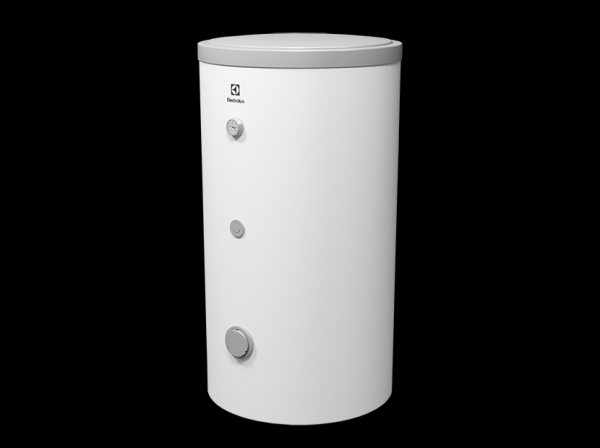

Photo 1. Boiler of indirect heating model 702.1, capacity - 712 liters, Italy.
It is advisable to choose the volume of the storage tank in which water will accumulate and warm up in the range of 200-300 liters. Lower values of the tank capacity should not be considered, since this will not be enough to heat even a small area.
Water heating is carried out using a tubular electric heater with a capacity of at least 8-12 kW.
Attention! It is important to take this indicator into account, since if it is lower, then the equipment will not cope with heating, and there will be a need for round-the-clock operation of the device
What is it for
After the storage tank is filled, the heating elements located inside it begin to warm up the water to the set temperature. As the required mark in degrees is reached, the liquid begins to flow through the pipes into the pipes of the main heating system.
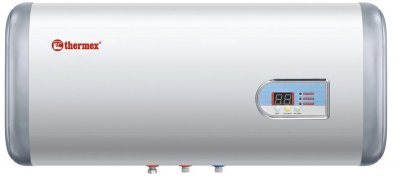

Although the principle of operation of a boiler for heating is quite simple, it is important to remember about the features of the preparatory process:
- create a loop with closed circulation;
- anticipate the possibility of adding liquid to the coolant from water supply systems;
- install a pump that regulates the stable movement of water through pipes, shut-off valves, an expansion tank;
- to establish the structure of water filtration, the liquid should circulate along the contour in a purified form without impurities.
Heating elements built into the boiler control the temperature fluctuations of the device. As soon as a user-defined value in degrees is reached, the system automatically turns off. If the water cools down, then the opposite process occurs: its heating will start again.
Boiler insulation
In order for the boiler to retain heat better, it must be wrapped with polypropylene, polyurethane foam or isolon. The insulating material is fixed with glue or wire. Thermal insulation of the entire surface of the boiler not only helps to retain heat, but also reduces the time for heating the water by increasing the efficiency of the heat carrier. High-quality insulation will not allow the water to cool down quickly.
The second way to insulate a boiler is to place a smaller volume inside a large tank. The resulting space acts as a heater.
And yet, if you realize that you are unable to install the boiler yourself, or there is a need to replace pipes due to wear, contact a specialist. Their services will not cost you too much: dismantling an old water heater - about 500 rubles, installing and connecting a new device - about 7,000 rubles. At the same time, you will be sure that the equipment is connected correctly and you will not have an accident or explosion. There is one more important point: if you install the boiler yourself, as a rule, the manufacturer's warranty will be canceled.
Materials and tools
For the installation of the water supply system, the following were purchased:
| Picture | Description |
| Food grade polyethylene tank with a volume of 500 liters. At the current average daily water consumption, its capacity is enough for two days of full use of the water supply system. The longest water cut-off during the author's life in Sevastopol lasted a little more than a day. The tank, together with the installation of a brass insert with a diameter of 1 inch, cost 4900 rubles. |
| Pumping station Neoclima GP600 / 20n with a capacity of 600 watts with a 20-liter membrane tank. It provides a maximum capacity of 50 liters per minute and raises water up to 35 meters. The factory settings of the automatic relay are to turn on the pump at 1.5 kgf / cm2 and turn it off at 3 kgf / cm2. |
| 1/2 ”brass float valve. Through it, the tank is filled in about half an hour. |
| Check valves with a diameter of 1 "and 1/2" for installation on the suction pipe of the pumping station and on the water supply inlet. |
| Ball valves (two 1/2 "and one 1"). They will allow you to cut off the tank and the pumping station from the water supply in case of any equipment malfunctions. |
| Unreinforced polypropylene pipes and fittings. |
| Threaded sockets, barrels and diameter adapters to adapt the backup system to the existing water supply. |
| Water pressure reducer. Due to the peculiarities of the relief, the water pressure at the entrance to the house is 6-7 kgf / cm2, which is noticeably higher than the standard values (2-4.5 kgf / cm2). Accordingly, when switching the water supply from the main to the backup circuit, a drop in pressure will be noticeable. The reducer will make the pressure in the water supply practically unchanged. |
In addition to the standard set of gas and adjustable wrenches, for the installation of backup water supply, you needed:
- Soldering iron for PPR pipes with a set of nozzles. It cost 1400 rubles;
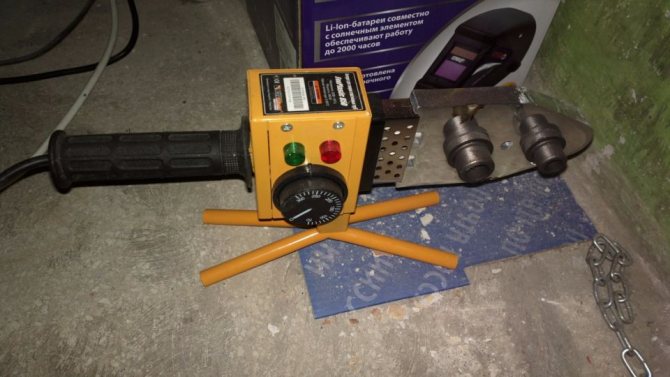

Soldering iron for socket welding
- Pipe cutter scissors at the price of 600 rubles.
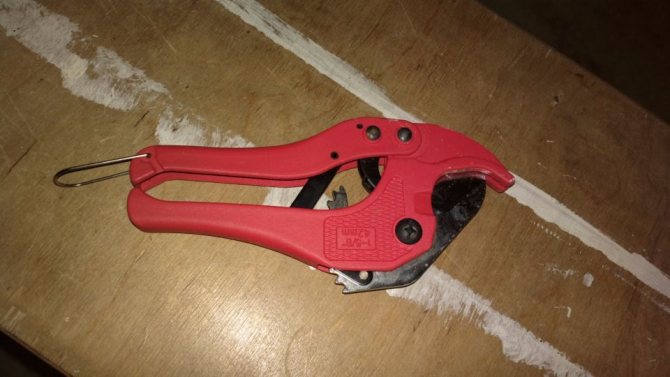

Plastic pipe cutter
The threads were sealed with sanitary flax and silicone sealant. If unprotected flax rots upon prolonged contact with condensate in cold water, then impregnated with silicone or paint will serve indefinitely.
Heating the house with a boiler
Good heating is one of the most important factors that distinguish a comfortable home from a home in which a person cannot feel comfortable. Today there are many traditional heating systems that can be used to heat a country house of any size. One of the most popular systems is gas heating. Natural gas is considered one of the cheapest heat carriers in our country. But, unfortunately, gas pipelines are far from being stretched everywhere. Therefore, heating systems that use a different heat carrier - for example, hot water - are very popular. And the basis of such a system can be an ordinary boiler.
Pros and cons of boiler-based heating
There are, perhaps, not too many advantages of such heating:
- The main advantage of such a system is simplicity. Almost any master can assemble a structure based on a boiler and connect heating pipes to it, because this does not require any special skills or complex equipment.
- Another advantage is low cost. As a rule, boilers are cheaper than electric boilers, therefore, when designing a low-power system, it is quite possible to save money.
As for the shortcomings, we talked about them throughout the article, so all that remains is to summarize:
- The capacity of household models of boilers is not enough to effectively heat an apartment. The maximum is heating the country house, and even then, not in winter, but in autumn, when there is no severe frost.
- The heating element of the device is constantly on, which, together with the regular renewal of water, leads to accelerated corrosion. Of course, the cost of heating elements is low, but replacing it is a very laborious process.
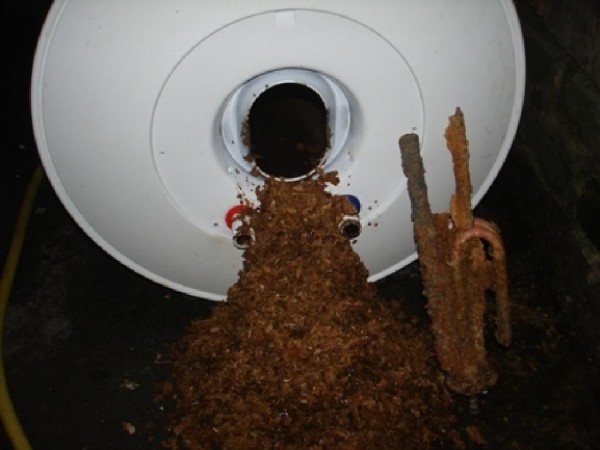

Replacing the heating element is not only a laborious process, but also dirty
If you assemble the system according to all the rules (that is, with the selection of a heater of the required power, correct piping, installation of a circulation pump in the heating system), then the savings compared to purchasing a boiler are scanty.
Summing up all of the above, we can say that electric boilers for heating can be used only in some situations.In all other cases, it is better to use heating devices more adapted for this purpose!

